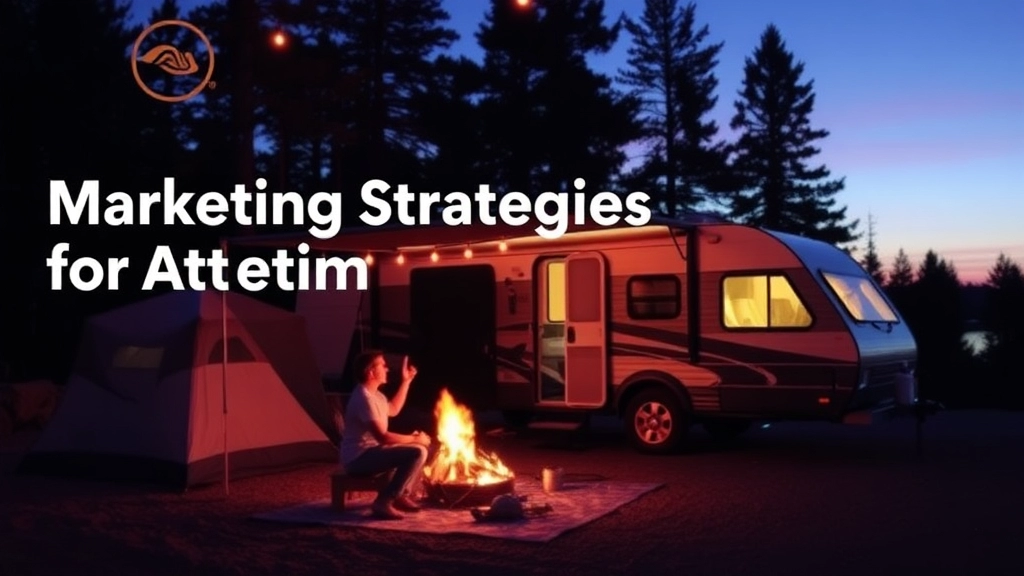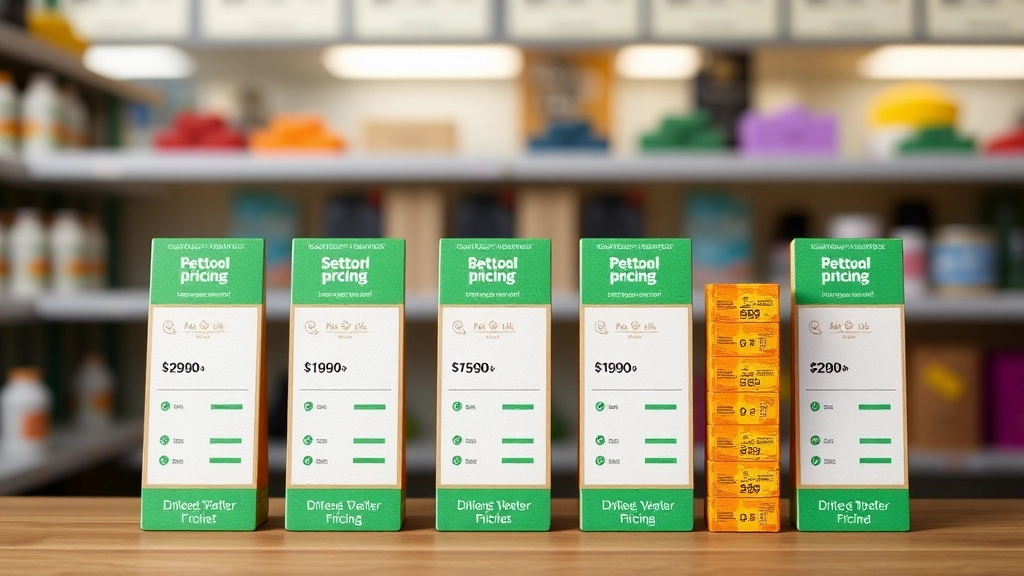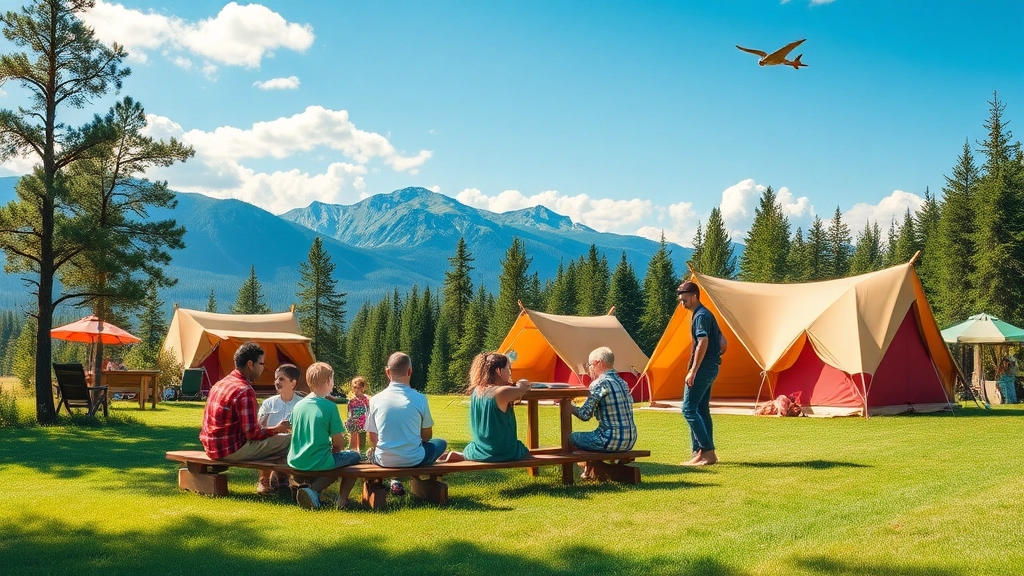Starting a Summer Camp Business
Starting a summer camp business is an exciting venture, but it comes with its unique set of challenges and opportunities. From choosing the right type of camp to conducting thorough market research and crafting a comprehensive business plan, each step is crucial to your success. The journey involves securing necessary permits, selecting suitable locations, and developing engaging programs that attract campers and satisfy parents. Financial planning, effective marketing strategies, and hiring qualified staff are also essential components that will ensure your camp runs smoothly and profitably.
Key Areas to Consider
In this article, we’ll delve into each of these critical areas, providing you with actionable insights and real-life examples to guide you through the process. Whether it’s setting competitive pricing models, managing operational and safety procedures, or evaluating camp success and growth opportunities, we’ve got you covered.
Your Roadmap to Success
By the end of this guide, you’ll have a clear roadmap to not only start but also sustain and grow a successful summer camp business. So, let’s get started on turning your dream into a thriving reality!
Choosing the Right Type of Summer Camp
So, you’re thinking about starting a summer camp, huh? That’s awesome! But here’s the thing: not all camps are created equal. Choosing the right type of summer camp is crucial, and it can make or break your venture. Let’s dive into the nitty-gritty and break it down.
What Are Parents and Kids Looking For?
First off, let’s address the big question: What do parents and kids actually want in a summer camp? Parents are usually looking for a safe, enriching environment where their kids can learn new skills and make friends. Kids, on the other hand, are all about fun and adventure.
Here are some common worries parents might have:
- Safety Concerns: Is my kid going to be safe?
- Educational Value: Will my child learn something new?
- Fun Factor: Will my kid actually enjoy it?
Types of Summer Camps to Consider
Now, let’s break down the different types of summer camps you can choose from:
- Day Camps: These are perfect for younger kids who aren’t ready for overnight stays. They offer a variety of activities but allow kids to return home each evening.
- Overnight Camps: Ideal for older kids who are ready for a bit more independence. These camps usually offer a more immersive experience.
- Specialty Camps: These focus on specific interests like sports, arts, or science. If your camp has a unique angle, this could be your niche.
- Adventure Camps: Think hiking, kayaking, and outdoor survival skills. Great for kids who love the outdoors.
- Educational Camps: These camps focus on learning, whether it’s coding, math, or even space exploration.
Matching Your Passion with Market Demand
Alright, let’s talk about you. What are you passionate about? Your enthusiasm will translate into a better experience for the campers. If you love sports, maybe a sports camp is your calling. If you’re into tech, perhaps a coding camp is more up your alley.
But passion alone isn’t enough. You’ve got to match it with market demand. Do some market research to see what types of camps are popular in your area.
Real-Life Example: The Success Story of Camp XYZ
Let me tell you a quick story about Camp XYZ. They started as a small day camp focusing on STEM activities. The founders were passionate about science and technology and saw a gap in the market. They matched their passion with market demand and boomâthey now run one of the most popular STEM camps in the region.
Important Considerations
Here are a few more things to think about:
- Age Group: Decide the age range you want to cater to.
- Duration: How long will your camp sessions be? A week? Two weeks?
- Seasonality: Will your camp run only in the summer, or will you offer other seasonal programs?
For more insights into designing a successful camp, check out our guide on summer camp cabin safety and design tips.
Conducting Market Research and Analyzing Competitors

Alright, so you’ve decided to start a summer camp. But how do you know if there’s even a market for it? How do you stand out from the competition?
Why Market Research is Crucial
Market research is your best mate here.
Without it, you’re just shooting in the dark.
You need to know:
- Who your target audience is
- What they want
- What your competitors are doing
Identifying Your Target Audience
First off, who are you trying to attract?
- Kids? Teens? Special needs?
- Are you focusing on sports, arts, or general activities?
Knowing this helps you tailor your camp to meet their needs.
Analysing Competitors
Next, let’s talk competitors.
Who else is running summer camps in your area?
What are they offering, and how can you do it better?
Check out their:
- Websites
- Social media
- Reviews
What to Look For
When you’re stalking your competitors (in a totally non-creepy way), focus on:
- Pricing Models
- Types of Activities
- Customer Reviews
- Marketing Strategies
Real Talk: What Are Parents Worried About?
Parents want to know:
- Is this camp safe?
- Is it worth the money?
- Will my kid have fun?
How to Gather Data
Use surveys, focus groups, and online research.
Survey Questions Could Include:
- What activities are most important to you?
- How much are you willing to pay?
- What age group is your child in?
Tools to Use
- Google Trends – See what’s trending.
- Social Media – What are people talking about?
- Competitor Websites – What are they offering?
Creating a Comprehensive Business Plan
Alright, let’s dive into creating a comprehensive business plan for your summer camp. This is the backbone of your entire operation, so let’s get it right from the start. The keyword here is business plan, and we’ll sprinkle it throughout.
Why You Need a Business Plan
Ever wondered why some camps thrive while others barely survive? The secret sauce often lies in a solid business plan. It’s your roadmap, your playbook, your guide to making sure everything runs smoothly. Without it, you’re just winging it, and trust me, that rarely ends well.
Key Components of a Business Plan
So, what goes into this magical document? Let’s break it down:
- Executive Summary
- Think of this as your camp’s elevator pitch. Who are you? What are you offering? Why should anyone care? Keep it snappy but impactful.
- Market Analysis
- Here, you’ll want to dive deep into the market research you’ve already conducted. Discuss your target audience, market size, and the competition. This is where you show you know the lay of the land.
- Camp Description
- This is where you get to paint a picture. Describe the type of camp you’re running, the age groups you’re targeting, and the unique aspects that set you apart from the competition.
- Organisation and Management
- Outline your camp’s structure. Who’s running the show? Include bios of key staff members and their roles. Transparency here builds trust.
- Programs and Activities
- Detail the activities and programs you’ll offer. This is your chance to shine and show what makes your camp irresistible. Check out Top Skits for Summer Camp Fun for some creative ideas.
- Marketing and Sales Strategy
- How are you going to attract campers? Discuss your marketing strategies, from social media campaigns to partnerships with local schools. For inspiration, explore Eyecatching Summer Camp Poster Design Tips.
- Funding Request
- If you’re seeking funding, this is where you lay it all out. How much do you need and how will you use it? Be specific.
- Financial Projections
- Show me the money! Include income statements, cash flow projections, and balance sheets. This is where you prove your camp is financially viable.
- Appendix
- Any additional information that supports your plan goes here. Think resumes, permits, or detailed program outlines.
Real Questions and Worries
“How do I even start writing a business plan?” you might be asking. Or maybe, “What if I miss something crucial?” These are legit concerns. The good news? It’s not as daunting as it seems. Break it down, tackle one section at a time, and before you know it, you’ll have a killer business plan.
Internal Linking Opportunities
While you’re at it, don’t forget to revisit Conducting Market Research and Analyzing Competitors for insights that will beef up your market analysis section. And when you’re detailing your Programs and Activities, make sure to check out Developing Camp Programs and Activities for some killer ideas.
Keep It Real
Let’s be real, writing a business plan isn’t the most glamorous part of starting a summer camp, but it’s essential. Think of it as the foundation of a house. You wouldn’t build a house on shaky ground, right? Same goes for your camp. Get this part right, and everything else will fall into place.
Final Thoughts
Creating a comprehensive business plan is your first big step towards running a successful summer camp. It’s not just a document; it’s your blueprint for success. So, take your time, be thorough, and make it count. Remember, a solid business plan can make all the difference between a camp that’s just okay and one that’s truly exceptional.
Securing Necessary Permits and Licenses

Ever wondered what it takes to get your summer camp legit?
You’re not alone.
Securing the right permits and licenses can feel like a maze.
But don’t worry, I’ve got your back.
Why Permits and Licenses Matter
First off, why do you even need permits and licenses?
Simple.
They keep your camp running legally and safely.
No one wants to deal with fines or, worse, shut down.
The Basics: What You Need
So, what permits and licenses are we talking about?
Here’s a quick rundown:
- Business License: Your camp is a business. You need a license to operate.
- Health Permits: Camps deal with food and health services. Health permits keep everything up to code.
- Fire Safety Clearance: Safety first. You need this to ensure your camp meets fire safety standards.
- Zoning Permits: Make sure your camp location is zoned for running a camp.
- Water Safety Certification: If you have pools or lakes, this is a must.
Steps to Secure Them
Alright, let’s break it down step-by-step.
- Identify Requirements: Every region has different rules. Check local government websites.
- Gather Documents: You’ll need things like ID, proof of address, and business plans.
- Submit Applications: Fill out forms and submit them. Some can be done online.
- Pay Fees: There are usually fees. Budget for them.
- Inspections: Be ready for inspections, especially for health and fire safety.
- Follow Up: Sometimes, you’ll need to follow up. Don’t assume it’s all set.
Real Talk: Common Hiccups
Permits and licenses can trip you up.
Here’s what often goes wrong:
- Delays: Processing times can be long. Start early.
- Missing Documents: Double-check you have everything.
- Failed Inspections: Fix issues quickly to avoid delays.
My Experience
When I started my camp, I thought I had it all figured out.
Turns out, I missed a zoning permit.
That set me back a month.
Lesson learned: triple-check everything.
Selecting a Suitable Location and Facilities
Alright, let’s dive into one of the most critical steps in setting up your summer camp: selecting a suitable location and facilities. This is where the magic happens, and trust me, getting this right can make or break your camp experience.
Questions and Worries
You might be asking yourself:
- How do I find the perfect spot?
- What facilities are a must-have?
- How do I balance cost and quality?
These are all valid concerns, and I’m here to help you navigate through them.
The Perfect Spot
Finding the right location isn’t just about picking a pretty place. You need to think about:
- Accessibility: Is it easy for parents to drop off and pick up their kids? Is there public transport nearby?
- Safety: Are there any natural hazards? Is the area known for being safe?
- Amenities: Are there nearby hospitals, grocery stores, and other essential services?
Must-Have Facilities
When it comes to facilities, you want to ensure you have everything needed to keep campers happy and safe. Here’s a breakdown:
- Sleeping Arrangements: Comfortable cabins or tents. Make sure they’re weatherproof and have enough space.
- Dining Hall: A place where kids can enjoy their meals. Cleanliness and hygiene are non-negotiable here.
- Activity Areas: Think sports fields, swimming pools, and craft rooms. The more variety, the better.
- Restrooms and Showers: Clean, accessible, and enough to handle the number of campers.
- Medical Facilities: A small clinic or at least a first-aid station. Safety first, always.
Balancing Cost and Quality
You don’t have to break the bank to find a great location, but you also don’t want to cut corners. Here are some tips:
- Leasing vs. Buying: Leasing can be cheaper upfront, but buying might be more cost-effective long-term.
- Renovations: Sometimes, a fixer-upper can be transformed into a perfect camp site with a bit of work.
- Partnerships: Partner with local businesses for discounts on supplies or services.
Real Stories and Examples
I remember talking to a camp owner who saved a ton by leasing a former school campus during the summer. The place had everythingâclassrooms for activities, a gym, and even a cafeteria. They just had to spruce it up a bit, and it was good to go. This kind of creative thinking can save you money and still provide a top-notch experience for your campers.
Internal Linking
Don’t forget, once you’ve got your location and facilities sorted, you’ll need to think about top summer camps in Dayton, Ohio and affordable low-cost summer camps near you. These steps are crucial in making sure your camp runs smoothly and offers an unforgettable experience.
Developing Camp Programs and Activities

Ever wondered how to make your summer camp the talk of the town?
Creating the right programs and activities can be a game-changer.
Let’s dive into how we can make this happen.
What Do Parents and Kids Really Want?
First things first, we need to know what parents and kids are looking for.
Parents want safety and value for money.
Kids want fun, adventure, and new friends.
To nail this, we need to balance both.
Start with a Mix of Activities
A good camp offers a mix of activities to keep things exciting.
Think about:
- Outdoor Adventures: Hiking, canoeing, and zip-lining.
- Creative Arts: Painting, drama, and music.
- Sports: Football, basketball, and swimming.
- Educational Activities: Science experiments, nature studies, and language lessons.
Tailor Programs for Different Age Groups
One size doesn’t fit all.
Create different programs for different age groups.
Younger kids might love scavenger hunts and arts and crafts.
Teens might prefer team sports and leadership workshops.
Involve the Kids in Planning
Why not let the kids have a say?
Ask them what they want to do.
You’d be surprised at the creative ideas they come up with.
Safety First, Always
Parents need to know their kids are safe.
Make sure all activities are supervised by qualified staff.
Have first aid kits handy.
And always have a plan for emergencies.
Keep it Fresh
No one likes doing the same thing over and over.
Mix up the activities each week.
Add special events like talent shows, themed days, or guest speakers.
Real-Life Example
I remember one camp where we introduced a “Survivor” day.
Kids loved it.
They formed teams, faced challenges, and learned survival skills.
It was a hit, and parents were thrilled with the life skills their kids picked up.
Get Feedback and Improve
After each camp session, get feedback from kids and parents.
What did they love?
What could be better?
Use this feedback to improve your programs.
Financial Planning: Budgeting and Funding Options
Alright, let’s talk money. When it comes to setting up a summer camp, financial planning is no joke. You’ve got to get your ducks in a row or risk sinking before you even start. So, how do you budget smartly and find the right funding options? Let’s dive in.
What Keeps You Up at Night?
Worried about how much this is going to cost? Not sure where to find the funds? You’re not alone. Many aspiring camp owners hit a wall when it comes to financial planning. But don’t sweat it; we’re breaking it down step-by-step.
The Basics of Budgeting
First things first, create a budget. This isn’t just a list of expenses; it’s your roadmap to financial health. Here’s what you need to include:
- Initial Costs: Think permits, licences, and initial marketing.
- Operational Costs: Staff salaries, utilities, food, and supplies.
- Marketing Costs: Website, brochures, social media ads.
- Unexpected Costs: Always have a buffer for those surprise expenses.
Funding Options: Where’s the Money Coming From?
Now, let’s talk funding. You’ve got a few avenues to explore:
- Personal Savings: If you’ve got some cash stashed away, this is the easiest route.
- Bank Loans: Traditional, but you’ll need a solid business plan to convince them.
- Investors: Give up some equity in exchange for capital.
- Grants and Scholarships: Look for government or private grants aimed at educational or recreational projects.
- Crowdfunding: Platforms like Kickstarter can help you raise funds from the public.
Breaking Down the Budget
To make it easier, here’s a quick table to help you visualise your budget:
| Category | Estimated Cost (£) |
|---|---|
| Permits and Licences | 1,000 |
| Staff Salaries | 20,000 |
| Marketing | 5,000 |
| Supplies | 3,000 |
| Utilities | 2,000 |
| Buffer | 5,000 |
| Total | 36,000 |
Real Talk: Stories and Examples
Let me share a quick story. A friend of mine started a summer camp a few years back. He underestimated his marketing budget and had to scramble to find last-minute funds. Lesson learned? Always overestimate your budget and have a backup plan.
Internal Linking Opportunity
If you’re still in the early stages, make sure you’ve checked out our section on Packing for Summer Camp: Ultimate Checklist. A solid business plan is crucial for securing funding. Additionally, understanding the benefits and costs of summer camp insurance can help you manage unexpected expenses.
Marketing Strategies for Attracting Campers

Ever wondered how to get kids and their parents excited about your summer camp?
You’re not alone.
It’s a real challenge.
But don’t worry, I’ve got your back.
Here’s how we can tackle this.
Know Your Audience
First off, who are you talking to?
Parents want safety and value for money.
Kids want fun and new experiences.
So, let’s speak their language.
Craft a Killer Website
Your website is your front door.
Make it user-friendly and mobile-optimised.
Key elements to include:
- High-quality images and videos of camp activities
- Easy-to-find information about programs, dates, and fees
- Testimonials from happy campers and parents
- A blog with tips for parents, like packing lists and first-time camper advice
Leverage Social Media
Parents hang out on Facebook.
Kids are on Instagram and TikTok.
Use both.
Post regularly.
Share behind-the-scenes snippets.
Run contests and giveaways.
Pro tip: Use hashtags like #SummerCampFun and #BestCampEver.
Email Marketing
Email isn’t dead.
It’s gold.
Build an email list.
Send out newsletters with:
- Early bird discounts
- Camp updates
- Exclusive content like “Top 5 Benefits of Summer Camp”
Partner with Schools and Community Centres
Get local.
Team up with schools and community centres.
Offer to give a talk or sponsor an event.
Leave brochures and flyers.
Word of Mouth
Nothing beats a good recommendation.
Encourage current campers and their parents to spread the word.
Offer referral discounts.
SEO and Content Marketing
Get found on Google.
Use keywords like “best summer camp” and “fun activities for kids”.
Write blog posts answering common questions:
- “What to Pack for Summer Camp?”
- “How to Prepare Your Child for Their First Camp?”
Paid Advertising
Invest in ads.
Google Ads, Facebook Ads, Instagram Ads.
Target parents in your area.
Use eye-catching visuals and strong calls to action.
Host Open Days
Invite families to visit.
Show them around.
Let them try out some activities.
Nothing convinces like a real-life experience.
Keep it Real
Be authentic.
Share real stories.
Post photos and videos of actual campers having a blast.
Track and Adjust
Monitor what works.
Use tools like Google Analytics.
Adjust your strategies based on the data.
Hiring and Training Qualified Staff
Alright, let’s talk about one of the biggest concerns when setting up a summer camp: hiring and training qualified staff. We all know that the success of a camp hinges on the people running it. But how do you find the right folks and ensure they’re up to the task? Let’s dive in.
Why Hiring the Right Staff Matters
First off, ask yourself: What kind of experience do I want the campers to have? The answer to this question will guide your hiring process. The right staff can make or break your camp. They are the ones interacting with the kids, ensuring safety, and delivering memorable experiences.
What to Look for in Camp Staff
When hiring, you’re not just looking for a warm body to fill a position. You need people who are:
- Experienced: Prior experience in a camp setting or working with children is a huge plus.
- Enthusiastic: Passion for outdoor activities and working with kids.
- Responsible: Trustworthy individuals who can handle emergencies.
- Certified: Depending on your camp’s activities, certifications like first aid, lifeguarding, or specific sports coaching can be crucial.
The Hiring Process
To streamline your hiring process, follow these steps:
- Create a Detailed Job Description: Be clear about the roles, responsibilities, and qualifications required.
- Advertise Wisely: Use platforms like Indeed, LinkedIn, and even local universities to find potential candidates.
- Conduct Thorough Interviews: Ask about past experiences, hypothetical situations, and why they want to work at your camp.
- Check References: Always follow up with previous employers to get a sense of the candidate’s work ethic and reliability.
Training Your Staff
Once you’ve hired the right people, the next step is training them to align with your camp’s vision. Here’s how to do it effectively:
- Orientation Sessions: Introduce new hires to the camp’s culture, rules, and expectations.
- Safety Training: Cover everything from first aid to emergency evacuation procedures.
- Activity-Specific Training: If your camp offers rock climbing, swimming, or other specialized activities, ensure staff are well-trained in these areas.
- Ongoing Development: Regularly update training to keep up with new safety standards and activity guidelines.
Keeping It Real: A Story
Let me share a quick story. I once hired a camp counselor named Sarah. She had all the qualifications on paper but was a bit shy during the interview. I decided to give her a chance, and boy, did she deliver! She connected with the kids in a way that was magical. Her enthusiasm was contagious, and she quickly became one of our most valued staff members. This taught me that sometimes, it’s worth taking a chance on someone who might not tick every box but has the right spirit.
For more insights on running a successful camp, check out our guide to Sacred Heart Summer Camp and learn about flexible summer camp drop-ins for busy families.
Setting Competitive Pricing Models

How do we set prices that attract campers but also keep the lights on?
That’s the million-dollar question.
Pricing your summer camp can feel like walking a tightrope.
Too high, and you scare off potential campers.
Too low, and you might not cover costs.
Here’s how we can nail it.
Understanding Your Costs
Before setting any prices, let’s break down our costs.
- Fixed Costs: Rent, utilities, insurance.
- Variable Costs: Staff wages, food, activity supplies.
- Unexpected Costs: Repairs, emergencies.
Knowing these numbers is crucial.
It gives us a clear picture of what we need to break even.
Researching Competitors
Look at what other camps are charging.
- Local Camps: What are they offering and at what price?
- Similar Camps: Camps with similar programs and facilities.
This helps us understand the market rate.
We don’t want to be the most expensive unless we offer something extraordinary.
Value Proposition
Why should parents choose our camp?
- Unique Activities: Do we offer something no one else does?
- Qualified Staff: Are our staff more experienced or better trained?
- Safety Measures: Do we have top-notch safety protocols?
Highlighting these can justify a higher price.
Pricing Models
Let’s talk about different pricing models.
- All-Inclusive: One price covers everything. Simple for parents.
- A La Carte: Base price plus extra for certain activities. Flexible but can get complicated.
- Tiered Pricing: Different levels of service at different prices. Offers choice but needs clear communication.
Choose what fits best with our camp’s style and target audience.
Discounts and Special Offers
Who doesn’t love a good deal?
- Early Bird Discounts: Encourage early sign-ups.
- Sibling Discounts: Make it easier for families with more than one child.
- Referral Bonuses: Reward campers who bring friends.
These can boost enrolment without slashing prices.
Real-Life Example
When I first started, I priced our camp at the lower end.
We got a lot of sign-ups but barely broke even.
The next year, we added some unique activities and slightly increased the price.
Guess what?
We not only covered costs but also made a profit.
Monitoring and Adjusting
Set it and forget it?
Not quite.
We need to keep an eye on enrolment numbers and feedback.
- Low Enrolment?: Maybe our price is too high.
- High Enrolment but Low Profit?: Time to reevaluate costs and pricing.
Adjust as needed to find that sweet spot.
Managing Operational and Safety Procedures
Hey, ever thought about what keeps a summer camp running smoothly? Or how to ensure the kids are safe while having the time of their lives? Managing operational and safety procedures is the backbone of any successful camp. Without it, you’re asking for chaos, and no one wants that.
Why Operational and Safety Procedures Matter
First, let’s get real. Parents are trusting you with their kids. That’s a big deal. They want to know that their kids are safe and that the camp runs like a well-oiled machine. Here’s what we need to focus on:
- Safety Protocols: From first aid to emergency evacuation plans, these are non-negotiable.
- Daily Operations: How do you keep things running on schedule? Think logistics, food services, and activity coordination.
Common Concerns and Questions
- What if a kid gets hurt?
- How do we manage food allergies?
- What’s the plan if there’s a storm?
These are the questions keeping camp directors up at night. Let’s break it down.
Safety Protocols
Emergency Plans
You need a rock-solid emergency plan. Here’s what it should include:
- First Aid: Always have a certified first-aid responder on-site. Make sure everyone knows who they are and how to reach them.
- Emergency Contacts: Keep an updated list of emergency contacts for all campers and staff.
- Evacuation Routes: Map out multiple evacuation routes for different scenarios (fire, flood, etc.).
Health and Wellness
Kids can be unpredictable. Here’s how to keep them safe:
- Medical Forms: Require medical forms for every camper. Know their allergies, medications, and any special needs.
- Daily Health Checks: Conduct quick health checks each morning. Look for signs of illness or injury.
- Sanitation: Keep facilities clean. This includes dining areas, restrooms, and sleeping quarters.
Activity Safety
Every activity has its risks. Here’s how to manage them:
- Risk Assessments: Perform risk assessments for each activity. Know the potential hazards and how to mitigate them.
- Qualified Instructors: Ensure instructors are trained and certified. Whether it’s swimming or rock climbing, you need experts.
- Safety Gear: Provide and enforce the use of safety gear. Helmets, life vests, and harnesses are must-haves.
Daily Operations
Scheduling and Logistics
A well-planned schedule is your best friend. Here’s what to consider:
- Activity Rotations: Plan activities in rotations to avoid overcrowding and ensure everyone gets a turn.
- Meal Times: Stagger meal times if you have a large group. This keeps the dining hall manageable.
- Free Time: Balance structured activities with free time. Kids need a break too.
Staff Coordination
Your staff is your lifeline. Here’s how to keep them in sync:
- Daily Briefings: Hold daily briefings to discuss the day’s schedule and any changes.
- Clear Roles: Assign clear roles and responsibilities. Everyone should know their job.
- Communication: Use walkie-talkies or a camp-wide PA system for quick communication.
Food Services
Feeding a bunch of hungry kids is no small feat. Here’s how to do it right:
- Menu Planning: Plan nutritious and kid-friendly meals. Consider dietary restrictions and allergies.
- Food Safety: Follow food safety guidelines. Keep hot foods hot and cold foods cold.
- Hydration Stations: Set up hydration stations around the camp. Encourage kids to drink water throughout the day.
Real Stories, Real Examples
I remember one camp where a sudden thunderstorm hit. Thanks to our solid emergency plan, we evacuated all the kids to a safe indoor location within minutes. No panic, no injuries. That’s the power of being prepared.
Or the time we had a camper with severe nut allergies. Our staff was trained to handle it, and we had strict food protocols. The kid had a blast, and the parents were beyond grateful.
Evaluating Camp Success and Growth Opportunities
Alright, you’ve got your summer camp up and running. But how do you know if it’s actually successful? And more importantly, how do you grow it?
First off, let’s tackle the big question: How do you measure success?
Key Metrics to Track
- Camper Satisfaction: Are the kids having a blast? Are parents happy with the experience?
- Retention Rates: Do campers come back year after year?
- Financial Performance: Are you making a profit? Breaking even?
- Staff Feedback: Are your employees satisfied and motivated?
- Program Effectiveness: Are your activities hitting the mark? Explore some fun and engaging activities to enhance your programs.
Collecting Feedback
You can’t improve what you don’t measure. Here’s how to get the data you need:
- Surveys: Send out post-camp surveys to parents and campers.
- Face-to-Face Chats: Have casual conversations with parents during pick-up and drop-off.
- Staff Meetings: Regularly check in with your team for their insights.
Analysing the Data
Once you’ve got the feedback, it’s time to dig in. Look for patterns. Are there common complaints or praises? Use this info to tweak your programs and operations.
Growth Opportunities
So, you’ve figured out what’s working and what’s not. Now, how do you grow?
- Expand Your Offerings: Add new activities or specialised programs. Consider introducing exciting LEGO camps to attract more campers.
- Increase Capacity: Can you handle more campers? Maybe it’s time to expand your facilities.
- Partnerships: Team up with local schools or organisations to boost enrolment.
- Marketing: Double down on what’s working. If social media brings in the most campers, invest more there.
Real Stories
Let’s say you ran a survey and found out that kids loved the arts and crafts sessions but were bored during the nature walks. Simple fix: ramp up the arts and crafts, maybe even bring in a local artist for a special workshop.
Or, maybe you noticed that parents were raving about the safety measures you had in place. That’s a goldmine! Use that in your marketing materials to attract more cautious parents.
Continuous Improvement
Remember, evaluating success isn’t a one-time thing. Make it a habit.
FAQs for Starting a Summer Camp Business
Why is market research important for starting a summer camp?
Market research helps you identify your target audience, understand their needs, and analyze what your competitors are offering. Without it, you’re essentially shooting in the dark.
How can I identify my target audience for a summer camp?
Consider who you want to attract. Are you focusing on kids, teens, or special needs groups? Are your activities centered around sports, arts, or general activities? Knowing this helps tailor your camp to meet their needs.
What should I look for when analyzing competitors?
Focus on their pricing models, types of activities, customer reviews, and marketing strategies. This can help you understand how to differentiate your camp and offer something unique.
What permits and licenses do I need to run a summer camp?
You will need a business license, health permits, fire safety clearance, zoning permits, and water safety certification if you have pools or lakes. These ensure your camp operates legally and safely.
What steps should I take to secure permits and licenses?
Identify local requirements, gather necessary documents, submit applications, pay fees, prepare for inspections, and follow up as needed. Starting early can help avoid delays.
What types of activities should I include in my camp programs?
A good camp offers a mix of activities like outdoor adventures, creative arts, sports, and educational activities. Tailoring programs for different age groups and keeping activities fresh can make your camp more appealing.
How can I ensure the safety of campers?
Ensure all activities are supervised by qualified staff, have first aid kits handy, and have a plan for emergencies. Safety is a top concern for parents.
What are effective marketing strategies for attracting campers?
Know your audience, craft a user-friendly website, leverage social media, use email marketing, partner with schools and community centers, and encourage word-of-mouth recommendations. Paid advertising and hosting open days can also be effective.
How should I set competitive pricing for my summer camp?
Understand your fixed and variable costs, research competitor pricing, and highlight your unique value proposition. Consider different pricing models like all-inclusive, a la carte, or tiered pricing, and offer discounts and special deals to attract campers.
What are common challenges when securing permits and licenses?
Common issues include delays in processing, missing documents, and failed inspections. Starting early and double-checking requirements can help mitigate these challenges.
How can I gather feedback to improve my camp programs?
After each camp session, collect feedback from kids and parents. Ask what they loved and what could be improved, and use this information to make adjustments for future sessions.
What are some effective ways to build an email list for marketing?
Offer incentives like early bird discounts, camp updates, and exclusive content. Encourage sign-ups through your website, social media, and during open days or events.
How can I monitor and adjust my pricing strategy?
Keep an eye on enrolment numbers and feedback. If enrolment is low, your price might be too high. If enrolment is high but profit is low, reevaluate your costs and pricing. Adjust as needed to find the right balance.
References
-
How to Conduct Market Research for Your Business Plan
-
How to Conduct Market Research for Your Startup
-
Why Market Research Is Important for a Startup

